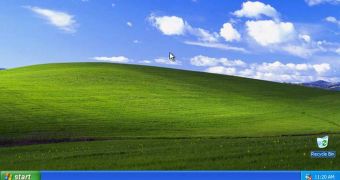With so many users still running Windows XP these days, it’s pretty to up the ante of its migration campaigns, especially because end of support will be reached in approximately 30 days.
While many companies are encouraging users to try out automatic migration solutions, Microsoft says that tech-savvy users can upgrade all by themselves to Windows 7 or Windows 8 if they follow some simple steps.
Of course, businesses are the ones that should really speed up the transition process to a newer OS, especially because computers would quickly become vulnerable after end of support comes.
Unsurprisingly, Redmond encourages everyone to try out Windows 8.1, even though it’s pretty clear that Windows XP computers aren’t quite capable of running the modern platform.
“Tech-savvy small businesses can also upgrade their current PCs if they are compatible with the newer operating system and productivity tools. To find out if your current PCs will work with modern operating systems such as Windows 8.1, visit the Windows 8.1 website,” Microsoft said.
In addition, the company is also offering several resources to aid users who are trying to upgrade, providing assistance on how to safely transfer files and data to a new device, but also to determine whether the applications they are running on their Windows XP computers are compatible with a newer OS version.
“Alternatively, small businesses can download the Windows 8 Upgrade Assistant to see if their existing PCs can run Windows 8.1 and follow the steps in the upgrade tutorial — including backing up important settings and files — to install the new operating system. Once a small business has upgraded to Windows 8.1, it can choose the right Office 365 subscription to meet the needs of the business,” it said.
Windows XP is installed on 29 percent of desktop computers worldwide, but figures are expected to drop a little bit more in the coming weeks as we get closer to the public retirement of the operating system.
Microsoft, however, hopes to cut down Windows XP’s share to only 13 percent by April 8 and even though that’s pretty impossible, expect more users to move to Windows 7 or Windows 8.1 in the next 30 days.
Most users are actually switching from Windows XP to Windows 7, but Microsoft claims that doing this is actually a mistake, mostly because they lack support for modern apps, as well features that would normally be available to Windows 8.1 users exclusively.

 14 DAY TRIAL //
14 DAY TRIAL //